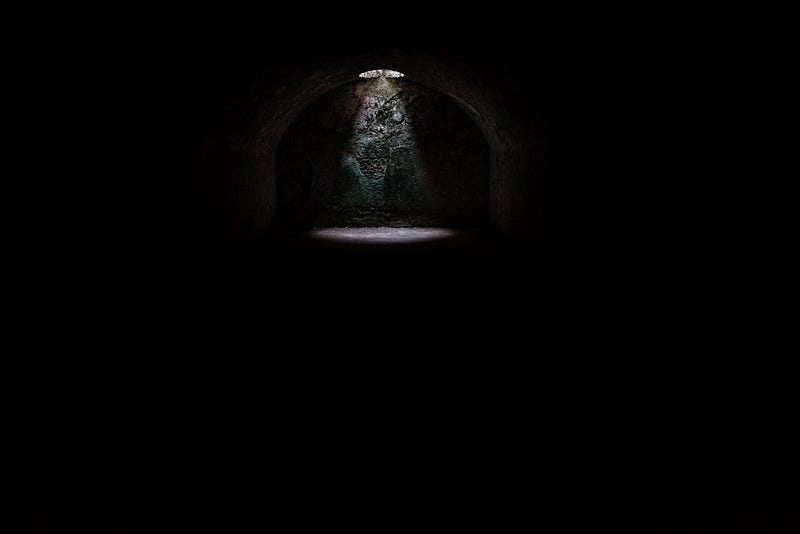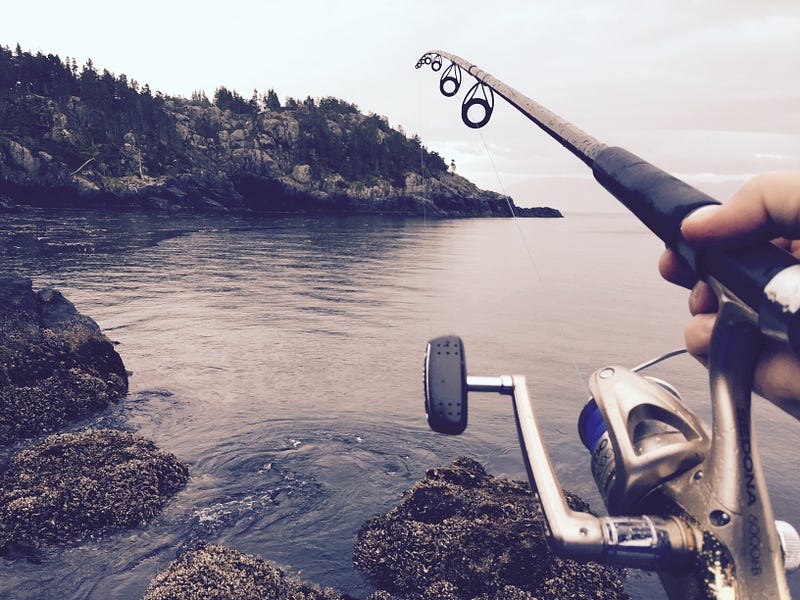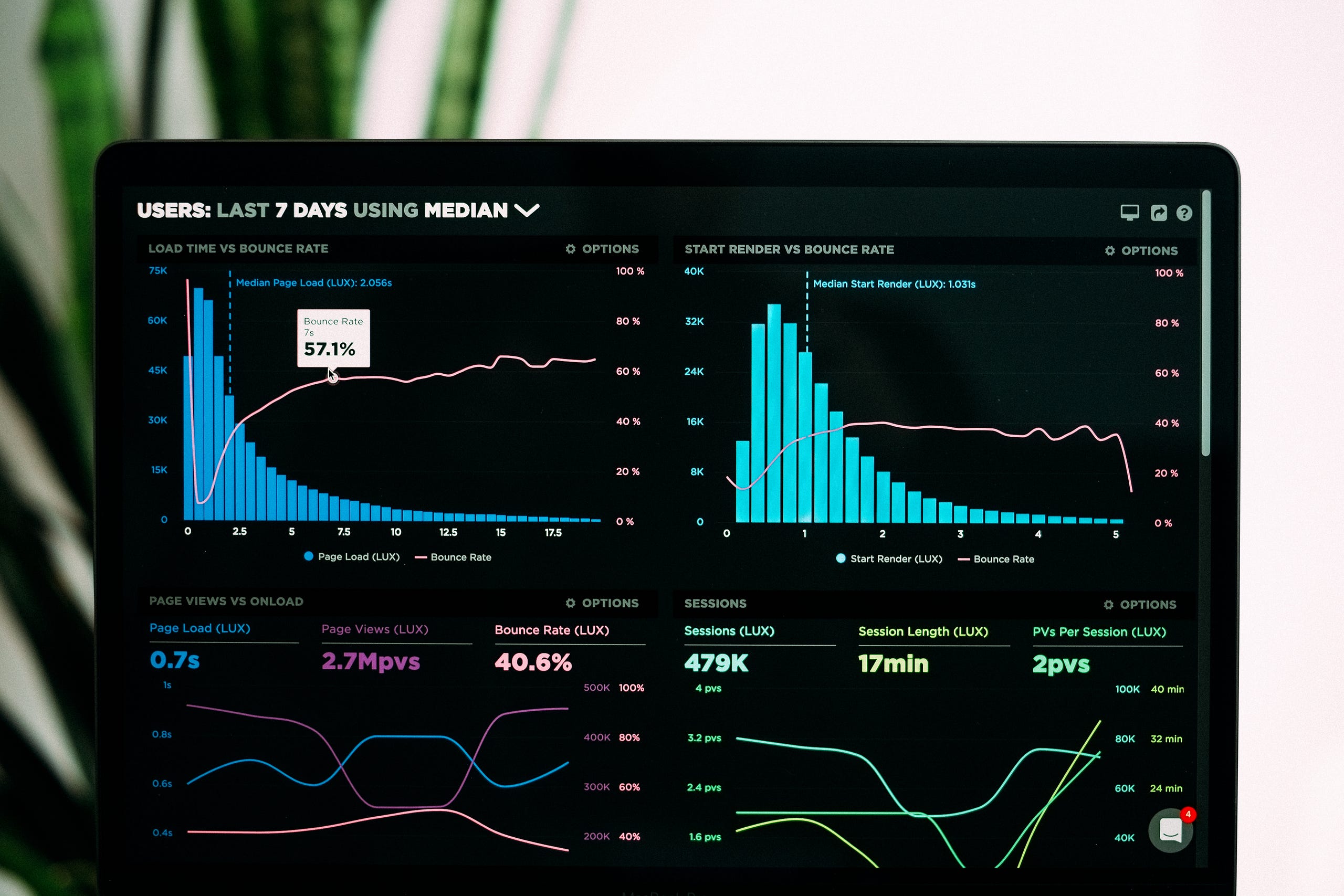Hi, I’m Jeremy, I’m glad you’re here.
No matter what you create, I’m guessing you spend a good amount of time feeling lost, hopeless, and unsure about how to get from where you are to where you want to be.
So do I. And so does everyone doing creative work.
This is the Creative Wilderness.
Every week, I publish a new article in my Creative Wayfinding newsletter about how we as creators and marketers can navigate it with more clarity and confidence.
If you’re building something that matters, but aren’t quite sure how to take the next step forward, I’d be honoured to have you join us.
Subscribe
Latest Post
Delicious Challenges: A Compass for Your Greatest Creative Opportunities
“Fuck that,” my friend, Jordon, exclaimed, breaking the pregnant silence that had descended on the table.
We were out for celebratory drinks a few days after our friend Hamilton had arrived in Winnipeg at the tail end of a long, grueling adventure… albeit one that hadn’t quite gone to plan.
For the past four weeks, Hamilton had been paddle-boarding his way from just outside his home in Saskatoon, Saskatchewan to Winnipeg.
It was a route only a handful of people had ever traveled, with few points of contact with civilization.
As such, there was little documentation, including any accurate idea of how long the route actually was or how long it would take to paddle.
A proper adventure in other words.
At the time of Jordon’s exclamation, Hamilton had just finished talking through his daily routine of the previous weeks living on the rivers and lakes, which went something like this:
- 4:30 am – Wake up at first light. Cook porridge, pack up tent. If lucky, it’s not raining and everything stays dry.
- 5:00 am – Load gear onto paddleboard. Get onto the water
- 8:30 am – Pull off the river if possible for a break and a snack. Can’t take too long, however, in order to make as much progress before the July sun is fully overhead.
- Noon – Pull off for lunch. Try to find some shade as it’s getting hot out on the water with no cover. Rest for an hour or so before getting back on the water.
- 4:30 pm – Start looking for a good spot on the bank to set up camp for the night.
- 5:30 pm – Set up camp, cook dinner, retreat into the tent to escape the incessant swarm of mosquitos, black flies, and horseflies.
- 7:00 pm – Go to bed exhausted, muscles aching.
- 4:30 am – Wake up at first light and do it all again. And again. And again. For weeks on end.
It was in the pause that followed Hamilton’s breakdown that Jordon broke the silence with a wry grin and a shake of his head.
“Fuck that.”
Jordon’s reaction was the rational one.
And yet, with each of the daily trials Hamilton listed, a broad smile couldn’t help but creep a little further across my face and I suppressed the urge to blurt out “sign me up!”
The difference in reaction might not be surprising.
Hamilton and I had previously spent 3 months together cycling 3,500km across Europe, camping out nearly every night from September to December, several of which dipped below freezing.
A few years later, along with another friend, we’d spent ten days walking 300km of the Camino Portugues, including several days in a row which approached marathon-length distances… all while carrying 40 lb backpacks.
These experiences were painful, difficult, and often monotonous.
They were also utterly delicious.
Of course, not everyone finds weeks or months-long human-powered expeditions delicious.
Most, like Jordon, find them absurd and pointless.
But Delicious Challenges come in many varieties, not least of all the form of creative projects.
And in my experience, it’s these projects that we find irresistible despite their apparent absurdity that are the projects most worthy of our pursuit.
How to Spot a Delicious Challenge
We each have our own preferred flavours of Delicious Challenges.
Personally, I salivate equally at the thought of figuring out complex marketing automations, the years-long process of building a brand from the ground up, and sitting down to write a 16,000+ word article on podcast sponsorships .
My partner, Kelly, a software developer, finds challenges related to setting up complex user flows and developing intricate systems particularly delicious.
But while the particulars may differ for each of us, Delicious Challenges all have a few things in common:
- Delicious Challenges are objectively hard – In fact, to most people, they likely look impossibly hard. And while we are fully aware of the difficulty going in, it only enhances the appeal of the project to us.
- Delicious Challenges are not conventionally fun or enjoyable – While others might recognize the value or necessity in undertaking a task or project you find delicious, they would rather avoid it unless they had no other choice.
- Delicious Challenges are magnetic – Despite the difficulty, you find yourself magnetically pulled toward them, perhaps even drooling or giddy with excitement at the thought of immersing yourself in the problem, no matter how painful and frustrating it may be. This often leads to incomprehension or incredulity from others.
- Delicious Challenges are uncertain – Going in, there’s no guarantee that you’ll be able to successfully complete the challenge. They are full of unknown and there is a strong chance of failure. Again, this only enhances the appeal to you, however.
Condensed around a particular project, these traits represent a powerful opportunity.
The Opportunities of Delicious Challenges
The outsized opportunity presented by Delicious Challenges is based on simple supply and demand.
The work in any field that is the easiest to do is quickly done to death, driving down its value. The work that is hardest to do, however, and the problems that are most difficult to solve, often remain unaddressed.
And it’s these problems where most of the upside lies.
Consider AI, a Delicious Challenge engineers and scientists have been pursuing for decades which is now beginning to transform the world in front of our eyes… and making some people and companies extremely wealthy in the process.
As creators, we might not be pursuing challenges with the power to re-order humanity’s relationship with technology, but the principle remains the same.
The more objectively difficult a project is, the higher the value of solving it likely is.
In the process of identifying and pursuing Delicious Challenges, then, we give ourselves an unfair advantage over the vast majority of our competitors.
Using Delicious Challenges to Your Advantage
In almost every field, there are people pursuing a goal based only on the inherent opportunity it represents.
In all likelihood, we’ve all been those people at one point or another, and there’s nothing wrong with it.
The problem, however, is that when our only motivation for a project is the promised outcome, it’s hard to compete with anyone who finds the process of working toward that outcome legitimately enjoyable.
While we might put our heads down and slog through the muck required to reach our destination, those who find find the challenge delicious prance their way through it, lapping it up and reveling in each new difficulty or problem that we, in turn, despair in.
So often this type of genuine enthusiasm more than makes up for a gap in knowledge, skill, budget, or any other advantage a pure opportunist might have.
Because when the going gets tough, the crowd thins out as the opportunities elsewhere suddenly start to look a lot more appealing.
Our opportunity then is to avoid the opportunities that we don’t find particularly delicious in favour of the ones we do.
Where each new challenge is not yet another obstacle to overcome but a delightfully complex puzzle to gleefully solve.
The Pleasure is in the Pain
It’s worth noting that Delicious Challenges aren’t all sunshine and rainbows.
In fact, they’re likely to be riddled with pain, frustration, misery, and perhaps occasional bouts of hopelessness.
And yet, with truly Delicious Challenges, these feelings are not only overpowered by the project’s pull on us, but actively enhance it.
Because ultimately, part of the allure of Delicious Challenges is in their use as a measuring stick of our knowledge, abilities, cunning, and fortitude.
For some, that might involve writing a book. For others, starting a startup. Others still might their measure in solving near-impossible jigsaw puzzles, or cryptic crosswords, by walking across countries or rowing across an ocean.
Logical people might look at all of these as foolish endeavours. As wastes of time with low odds of success.
And yet, despite what logic might dictate, when a Delicious Challenge presents itself to you, it’s almost impossible to resist.
So don’t.
Because the Delicious Challenges that are the most illogical and incomprehensible to others are your greatest opportunity to do something few others are capable of.
And reap the rewards in the process.
Explore how to navigate a creative life that matters
This article originally appeared in my weekly Creative Wayfinding Newsletter. Each issue is the product of a week of work, and contains something not available for sale.
A fresh perspective, a shot of encouragement when you need it most, and maybe even some genuine wisdom from time to time.
Each week, we explore a different facet of the question “How do we navigate the wilds of creating work that matters?”
It’s something I’m proud to create and I’d be honoured to share it with you.
Subscribe
More Posts
Face The Dark

It’s easy to shut off the news, avoid the negative, avert our eyes what we don’t want to see in the name of staying positive, fueling our creativity, and maintaining our own mental health.
Garbage in garbage out, after all. Our inputs determine our outputs.
But negative inputs aren’t inherently garbage inputs.
Sometimes facing the darkness, the negative and the painful is essential to increasing our empathy. And our work, but more importantly our relationships with others and the world can only improve by adding more empathy.
It benefits us to learn about and recognize the experiences of people not like us.
It benefits us to examine the role we and our work have played in perpetuating unjust systems.
It benefits us to delve into the places in ourselves, and the world we’d rather not delve into and emerge more understanding, compassionate, and prepared to do more than we’ve previously known how.
And it benefits us, and everyone, to take what we’ve learned by venturing into the darkness and creating more empathetic, meaningful, work.
Every Sunday I publish an exclusive article on my newsletter that hopefully provides a new perspective, encouragement, and maybe even some occasional wisdom.
It’s something I’m proud to create and I’d be honoured to deliver it to you. If you’d like me to share it with you please subscribe here.
Want to hear more about building an audience around work that matters? I think you might enjoy these reads.
https://medium.com/@jeremyenns/already-inherited-everything-we-need-be9f218c7770
We’ve Already Inherited Everything We Need

When is the ceremony?
Is there an official key exchange?
Who’s hand will I get to shake as the media furiously snaps photos of the historic event?
So often when it comes to macro global trends, movements, and events like climate change or the current protests over the murder of George Floyd, we think of there being this generational power divide.
Anyone over a certain undefined age control has control over the events and direction, and anyone under that age must wait to inherit “the world that is left for the next generation.”
This thinking disempowers us, however. It makes us feel like we have to wait until some distant future when our voice will matter enough to speak up and act.
But our voices matter now.
There is no inheritance ceremony, no handing over control of the direction of the world.
No matter our age, we’ve already inherited the world and are responsible to use what we have to shape it into the kind of world we want it to be.
There’s no waiting until we have more agency or ability in the future, most of us will never have more than we do right now. But it’s enough.
So let’s get down to the hard but essential work of owning our inheritance, all the guilt, shame, abuse, inaction, hope, love, empathy, and compassion that comes with it, and do our part to make things better for those beyond ourselves.
Every Sunday I publish an exclusive article on my newsletter that hopefully provides a new perspective, encouragement, and maybe even some occasional wisdom.
It’s something I’m proud to create and I’d be honoured to deliver it to you. If you’d like me to share it with you please subscribe here.
Want to hear more about building an audience around work that matters? I think you might enjoy these reads.
https://medium.com/@jeremyenns/facing-the-gap-253b7ac6b56chttps://medium.com/@jeremyenns/facing-the-gap-253b7ac6b56c
What’s Your Hook?

Think of the last movie you saw in the theater.
Chances are, before committing to that movie you either heard about it from a friend or saw the trailer and were intrigued enough to find out more.
Whether it’s filling movie theater seats or building an audience around your work, you need a great hook to get people through the door.
Think of how many times you get asked what you do. How many times do people who know you have a podcast, a blog or a YouTube channel ask what it’s about?
A great hook should cause their eyebrows to shoot up, interested, intrigued even, curious to find out more, even if they’re not in your target audience.
A great hook is concise and memorable, something that sticks in the memory of everyone you tell. Something they can repeat verbatim next time they come across someone who might be interested in the content you create.
With a great hook, you can turn everyone you talk to about your work into a small part of your marketing department.
Without a great hook, they tune out, you lose interest, and the opportunity is wasted.
Find your hook. Find a way in 15 words to describe what you do, who it’s for, and why it matters.
No, it’s not easy, that’s why not that many people have a great hook, which is why not that many people are able to turn acquaintances into advocates, which is why so many creators are left struggling to build an audience around their work.
Your work is interesting. Learn to communicate that and watch your audience begin to grow.
Every Sunday I publish an exclusive article on my newsletter that hopefully provides a new perspective, encouragement, and maybe even some occasional wisdom.
It’s something I’m proud to create and I’d be honoured to deliver it to you. If you’d like me to share it with you please subscribe here.
Want to hear more about building an audience around work that matters? I think you might enjoy these reads.
https://medium.com/@jeremyenns/bring-enthusiasm-2d6a545d5f17https://medium.com/@jeremyenns/bring-enthusiasm-2d6a545d5f17
Why Won’t This Work?

Before you start down the road of creating something that matters to you, it’s worth picturing the end result.
In the event that your work succeeds it’s important to understand what you’re working towards.
But perhaps it’s even more important to envision the scenarios in which the end result is failure.
Whether it’s something big, a new business or partnership, or something small, a newsletter, blog post, or podcast episode, if you care about the work you produce and believe in it’s potential for impact, it’s worth asking the question, “If this falls flat, if it fails to resonate with the people I’m creating it for, why will that be?”
Chances are there are dozens of reasons your work could fail. Some of them will be entirely outside of your control. But many of them will be entirely within your control, and they may be obstacles and traps you might not have otherwise seen.
Doing a pre-mortem can help you address these challenges and potential stumbling blocks in advance, giving your work the best possible chance of landing, of resonating, of achieving the goal it was created for.
Better to face the inevitable challenges head-on, with your eyes open than be caught unawares.
Every Sunday I publish an exclusive article on my newsletter that hopefully provides a new perspective, encouragement, and maybe even some occasional wisdom.
It’s something I’m proud to create and I’d be honoured to deliver it to you. If you’d like me to share it with you please subscribe here.
Want to hear more about building an audience around work that matters? I think you might enjoy these reads.
https://medium.com/@jeremyenns/real-foundation-creative-work-cb1360180d2dhttps://medium.com/@jeremyenns/real-foundation-creative-work-cb1360180d2d
Set a New Baseline

Baselines are important for measuring the quality and effectiveness of your future work, but they can also be a trap.
Whether it’s how much you charge, how much you can get done, how many people your latest podcast or blog post reaches, or some measure of the quality of your work, baselines can be essential in pushing you to meet the minimum standards you’ve set for yourself.
The problem is that the baselines you set to measure your work probably don’t reflect what you’re truly capable of if you push yourself.
Want to read this story later? Save it in Journal.
They can become a place to hide, to justify to yourself and others that you’re doing enough, giving enough, aiming high enough.
But you probably aren’t.
I’m guessing you have another gear you could shift into, and that once you find it, you’ll also find that your existing baselines were selling short what you are truly capable of achieving.
Hitting your baselines should not be foregone conclusions. They should push you to exert yourself in order to achieve them.
If you’re able to coast your way to meeting the minimum requirements, it’s time to aim higher, dig deeper, and set a new standard for your work.
Every Sunday I publish an exclusive article on my newsletter that hopefully provides a new perspective, encouragement, and maybe even some occasional wisdom.
It’s something I’m proud to create and I’d be honoured to deliver it to you. If you’d like me to share it with you please subscribe here.
Want to hear more about building an audience around work that matters? I think you might enjoy these reads.
https://medium.com/@jeremyenns/revisit-bad-ideas-949aadd8ec4bhttps://medium.com/@jeremyenns/revisit-bad-ideas-949aadd8ec4b

📝 Save this story in Journal.
👩💻 Wake up every Sunday morning to the week’s most noteworthy stories in Tech waiting in your inbox. Read the Noteworthy in Tech newsletter.
Slumps Are Inevitable

No matter how good and for how long things have been going, eventually we all will hit a slump.
It might be confined to a single pursuit or practice, or it might affect our entire lives.
Results that once came easily we now have to fight tooth and nail to achieve. There often seems to be no rational reason for this slump, but the effects are very real.
When we find ourselves in the midst of one of these inevitable slumps we have a couple of options.
We can continue on as we had before, relying on persistence and past proof that our actions should achieve our desired outcomes.
Or we can change things up and look for alternative methods to reach our end destination.
Both can work and both can fail. Often which one will work depends on who we are and the specific slump in which we find ourselves.
In either case, it’s essential to find something that we can get on a roll with again. Something small, even inconsequential is a good place to start. Momentum needs to begin somewhere.
If we can find a foothold of momentum in one area, we can work to build on that momentum and transfer it elsewhere.
Momentum is built by time, effort, and persistence. As such, our slump won’t be broken in one day.
But we can take a tiny action to start the ball rolling in one.
Every Sunday I publish an exclusive article on my newsletter that hopefully provides a new perspective, encouragement, and maybe even some occasional wisdom.
It’s something I’m proud to create and I’d be honoured to deliver it to you. If you’d like me to share it with you please subscribe here.
Want to hear more about building an audience around work that matters? I think you might enjoy these reads.
https://medium.com/@jeremyenns/root-of-your-problems-db9975629832https://medium.com/@jeremyenns/root-of-your-problems-db9975629832
Rules for Interesting

We all want more interesting in our lives.
We want interesting friends, to work with interesting clients or for interesting organizations, do interesting things, eat interesting food, read interesting books and have interesting conversations. The list could go on for a long time.
Few of us want more boring, more average, more mundane in our lives, and many of us go to great lengths to escape them.
Perhaps most of all, we want to be seen by others as interesting.
And with good reason. Interesting people attract interesting people, interesting opportunities, and as a result, end up leading interesting lives.
So how to become interesting? This list is a start.
- Rather than striving to be “the best” in a pursuit, strive to be the very best version of you.
- Learn broadly about a number of subjects, but deeply about a few.
- Do interesting things in an interesting way.
- Develop an eye for interesting people and brands. Engage with them. Study them.
- Get curious.
- Then follow your curiosity.
- Get good at doing.
- Talk to people.
- You don’t need to avoid what everyone else is doing, but you do need to go further beyond it.
- Seek to understand people and ideas you don’t agree with.
- Try things.
- Challenge yourself.
- Cultivate boredom.
- Bring enthusiasm to the things you care about.
- Be shameless in your likes, interests and activities.
Every Sunday I publish an exclusive article on my newsletter that hopefully provides a new perspective, encouragement, and maybe even some occasional wisdom.
It’s something I’m proud to create and I’d be honoured to deliver it to you. If you’d like me to share it with you please subscribe here.
Want to hear more about building an audience around work that matters? I think you might enjoy these reads.
https://medium.com/@jeremyenns/bring-enthusiasm-2d6a545d5f17https://medium.com/@jeremyenns/bring-enthusiasm-2d6a545d5f17
Healthy Compromise

When you have high standards for yourself it’s only natural to want, or perhaps even need, everything you do to be done at nothing less than 100% of your capability.
These standards can lead you to excel in many of your pursuits, but they can also lead to burnout.
It might be possible to go all-in on your work, your health, your relationships, and your hobbies when you’re in cruising mode, you’re routine carrying on as normal.
But when one area of your life begins to demand more attention, time and focus, be it a big project at work or a difficult phase in a relationship, the answer is not to maintain your 100% commitment to your other pursuits as well.
Instead, you must accept that to do the truly important things well, you must be willing to introduce some healthy compromise in other areas of your life.
There’s only so much time, energy, and attention to go around. It’s up to you to decide where yours can most effectively be spent each moment, day, and week.
Priorities shift, and so too should the focus of your attention. Maintaining a standard of excellence in everything you do sounds good in theory but is a recipe for burnout and collapse if pursued too zealously.
Learn instead to recognize what matters in the moment and maintain a standard of excellence in that.
Every Sunday I publish an exclusive article on my newsletter that hopefully provides a new perspective, encouragement, and maybe even some occasional wisdom.
It’s something I’m proud to create and I’d be honoured to deliver it to you. If you’d like me to share it with you please subscribe here.
Want to hear more about building an audience around work that matters? I think you might enjoy these reads.
https://medium.com/@jeremyenns/dont-need-answers-204432d5739ahttps://medium.com/@jeremyenns/dont-need-answers-204432d5739a
Get to the Root of Your Problems

What if almost every one of the problems and challenges you’re currently facing could be traced back to a single source?
So often we find ourselves racing around putting out a dozen different fires, applying bandaids, duct tape, and prescriptions when we could be solving all of our symptoms at once by addressing the root cause.
Of course, that would almost certainly require us to accept that the problems are not external, not “out there”, not being imposed upon us, or done to us, and instead, look inward.
The only common denominator between each of our many current challenges is us.
If we can accept that fact, we can begin to shift our mindset, our worldview, our method of engaging with others, the world, and the work we do and begin to see different results.
Because as much as we’re the common denominator when it comes to our challenges, we’re also the common denominator when it comes to our successes.
Every Sunday I publish an exclusive article on my newsletter that hopefully provides a new perspective, encouragement, and maybe even some occasional wisdom.
It’s something I’m proud to create and I’d be honoured to deliver it to you. If you’d like me to share it with you please subscribe here.
Want to hear more about building an audience around work that matters? I think you might enjoy these reads.
https://medium.com/@jeremyenns/answers-right-front-you-dc39a091b227https://medium.com/@jeremyenns/answers-right-front-you-dc39a091b227
Bring the Enthusiasm
Your content can be solid, your value proposition obvious, and your audience targeting impeccable.
But without genuine enthusiasm from you, as the creator, salesperson, and entire marketing department, it often all falls flat.
Before you can convince others that it’s worth their time, attention, and money to listen to your podcast, sign up for your program or buy your product, you need to be convinced of it yourself.
People will get excited if the offer is a fit, but you need to set the tone.
If you can’t bring the enthusiasm for the work you put out, ask yourself why. It might be that it’s not quite at the level it needs to be at yet. Go back and work on it until it’s good enough, until it’s something you’re truly excited to share with others.
But remember, at some point, you need to ship the work, and if you want it to be met with enthusiasm, you have to bring it yourself.
Creative Wayfinding For Ambitious Optimists.
Progress Happens When the Bar is Raised

So often we defer to someone outside of ourselves to set the bar that dictates what’s expected of us.
It might be a stretch at first to meet that expectation, but after a while, it becomes rote, the norm, business as usual.
At this point, we could choose to raise the bar for ourselves, to go above and beyond what’s expected of us by our boss, our peers, our society.
But how far do we raise it? What’s the benefit? We’re already doing enough, aren’t we?
Besides, raising the bar for ourselves has the unwanted (by some) side effect of subtly raising the bar for those around us, who may now feel inadequate. That’s a surefire recipe to breed resentment.
Raising the bar, however,–even only for ourselves–is how progress is made. Raising the bar disrupts the status quo and leads to change, innovation, and forward progress.
If there is a change we want to see in the world, we can start is by raising the bar in regard to how we approach the issue personally.
Chances are, when we hold ourselves to a higher standard, others will begin to as well until all of a sudden there’s a higher standard for everyone, and the change is made.
Every Sunday I publish an exclusive article on my newsletter that hopefully provides a new perspective, encouragement, and maybe even some occasional wisdom.
It’s something I’m proud to create and I’d be honoured to deliver it to you. If you’d like me to share it with you please subscribe here.
Want to hear more about building an audience around work that matters? I think you might enjoy these reads.
https://medium.com/@jeremyenns/already-inherited-everything-we-need-be9f218c7770https://medium.com/@jeremyenns/already-inherited-everything-we-need-be9f218c7770
Face The Dark

It’s easy to shut off the news, avoid the negative, avert our eyes what we don’t want to see in the name of staying positive, fueling our creativity, and maintaining our own mental health.
Garbage in garbage out, after all. Our inputs determine our outputs.
But negative inputs aren’t inherently garbage inputs.
Sometimes facing the darkness, the negative and the painful is essential to increasing our empathy. And our work, but more importantly our relationships with others and the world can only improve by adding more empathy.
It benefits us to learn about and recognize the experiences of people not like us.
It benefits us to examine the role we and our work have played in perpetuating unjust systems.
It benefits us to delve into the places in ourselves, and the world we’d rather not delve into and emerge more understanding, compassionate, and prepared to do more than we’ve previously known how.
And it benefits us, and everyone, to take what we’ve learned by venturing into the darkness and creating more empathetic, meaningful, work.
Every Sunday I publish an exclusive article on my newsletter that hopefully provides a new perspective, encouragement, and maybe even some occasional wisdom.
It’s something I’m proud to create and I’d be honoured to deliver it to you. If you’d like me to share it with you please subscribe here.
Want to hear more about building an audience around work that matters? I think you might enjoy these reads.
https://medium.com/@jeremyenns/already-inherited-everything-we-need-be9f218c7770
We’ve Already Inherited Everything We Need

When is the ceremony?
Is there an official key exchange?
Who’s hand will I get to shake as the media furiously snaps photos of the historic event?
So often when it comes to macro global trends, movements, and events like climate change or the current protests over the murder of George Floyd, we think of there being this generational power divide.
Anyone over a certain undefined age control has control over the events and direction, and anyone under that age must wait to inherit “the world that is left for the next generation.”
This thinking disempowers us, however. It makes us feel like we have to wait until some distant future when our voice will matter enough to speak up and act.
But our voices matter now.
There is no inheritance ceremony, no handing over control of the direction of the world.
No matter our age, we’ve already inherited the world and are responsible to use what we have to shape it into the kind of world we want it to be.
There’s no waiting until we have more agency or ability in the future, most of us will never have more than we do right now. But it’s enough.
So let’s get down to the hard but essential work of owning our inheritance, all the guilt, shame, abuse, inaction, hope, love, empathy, and compassion that comes with it, and do our part to make things better for those beyond ourselves.
Every Sunday I publish an exclusive article on my newsletter that hopefully provides a new perspective, encouragement, and maybe even some occasional wisdom.
It’s something I’m proud to create and I’d be honoured to deliver it to you. If you’d like me to share it with you please subscribe here.
Want to hear more about building an audience around work that matters? I think you might enjoy these reads.
https://medium.com/@jeremyenns/facing-the-gap-253b7ac6b56chttps://medium.com/@jeremyenns/facing-the-gap-253b7ac6b56c
What’s Your Hook?

Think of the last movie you saw in the theater.
Chances are, before committing to that movie you either heard about it from a friend or saw the trailer and were intrigued enough to find out more.
Whether it’s filling movie theater seats or building an audience around your work, you need a great hook to get people through the door.
Think of how many times you get asked what you do. How many times do people who know you have a podcast, a blog or a YouTube channel ask what it’s about?
A great hook should cause their eyebrows to shoot up, interested, intrigued even, curious to find out more, even if they’re not in your target audience.
A great hook is concise and memorable, something that sticks in the memory of everyone you tell. Something they can repeat verbatim next time they come across someone who might be interested in the content you create.
With a great hook, you can turn everyone you talk to about your work into a small part of your marketing department.
Without a great hook, they tune out, you lose interest, and the opportunity is wasted.
Find your hook. Find a way in 15 words to describe what you do, who it’s for, and why it matters.
No, it’s not easy, that’s why not that many people have a great hook, which is why not that many people are able to turn acquaintances into advocates, which is why so many creators are left struggling to build an audience around their work.
Your work is interesting. Learn to communicate that and watch your audience begin to grow.
Every Sunday I publish an exclusive article on my newsletter that hopefully provides a new perspective, encouragement, and maybe even some occasional wisdom.
It’s something I’m proud to create and I’d be honoured to deliver it to you. If you’d like me to share it with you please subscribe here.
Want to hear more about building an audience around work that matters? I think you might enjoy these reads.
https://medium.com/@jeremyenns/bring-enthusiasm-2d6a545d5f17https://medium.com/@jeremyenns/bring-enthusiasm-2d6a545d5f17
Why Won’t This Work?

Before you start down the road of creating something that matters to you, it’s worth picturing the end result.
In the event that your work succeeds it’s important to understand what you’re working towards.
But perhaps it’s even more important to envision the scenarios in which the end result is failure.
Whether it’s something big, a new business or partnership, or something small, a newsletter, blog post, or podcast episode, if you care about the work you produce and believe in it’s potential for impact, it’s worth asking the question, “If this falls flat, if it fails to resonate with the people I’m creating it for, why will that be?”
Chances are there are dozens of reasons your work could fail. Some of them will be entirely outside of your control. But many of them will be entirely within your control, and they may be obstacles and traps you might not have otherwise seen.
Doing a pre-mortem can help you address these challenges and potential stumbling blocks in advance, giving your work the best possible chance of landing, of resonating, of achieving the goal it was created for.
Better to face the inevitable challenges head-on, with your eyes open than be caught unawares.
Every Sunday I publish an exclusive article on my newsletter that hopefully provides a new perspective, encouragement, and maybe even some occasional wisdom.
It’s something I’m proud to create and I’d be honoured to deliver it to you. If you’d like me to share it with you please subscribe here.
Want to hear more about building an audience around work that matters? I think you might enjoy these reads.
https://medium.com/@jeremyenns/real-foundation-creative-work-cb1360180d2dhttps://medium.com/@jeremyenns/real-foundation-creative-work-cb1360180d2d
Set a New Baseline

Baselines are important for measuring the quality and effectiveness of your future work, but they can also be a trap.
Whether it’s how much you charge, how much you can get done, how many people your latest podcast or blog post reaches, or some measure of the quality of your work, baselines can be essential in pushing you to meet the minimum standards you’ve set for yourself.
The problem is that the baselines you set to measure your work probably don’t reflect what you’re truly capable of if you push yourself.
Want to read this story later? Save it in Journal.
They can become a place to hide, to justify to yourself and others that you’re doing enough, giving enough, aiming high enough.
But you probably aren’t.
I’m guessing you have another gear you could shift into, and that once you find it, you’ll also find that your existing baselines were selling short what you are truly capable of achieving.
Hitting your baselines should not be foregone conclusions. They should push you to exert yourself in order to achieve them.
If you’re able to coast your way to meeting the minimum requirements, it’s time to aim higher, dig deeper, and set a new standard for your work.
Every Sunday I publish an exclusive article on my newsletter that hopefully provides a new perspective, encouragement, and maybe even some occasional wisdom.
It’s something I’m proud to create and I’d be honoured to deliver it to you. If you’d like me to share it with you please subscribe here.
Want to hear more about building an audience around work that matters? I think you might enjoy these reads.
https://medium.com/@jeremyenns/revisit-bad-ideas-949aadd8ec4bhttps://medium.com/@jeremyenns/revisit-bad-ideas-949aadd8ec4b

📝 Save this story in Journal.
👩💻 Wake up every Sunday morning to the week’s most noteworthy stories in Tech waiting in your inbox. Read the Noteworthy in Tech newsletter.
Slumps Are Inevitable

No matter how good and for how long things have been going, eventually we all will hit a slump.
It might be confined to a single pursuit or practice, or it might affect our entire lives.
Results that once came easily we now have to fight tooth and nail to achieve. There often seems to be no rational reason for this slump, but the effects are very real.
When we find ourselves in the midst of one of these inevitable slumps we have a couple of options.
We can continue on as we had before, relying on persistence and past proof that our actions should achieve our desired outcomes.
Or we can change things up and look for alternative methods to reach our end destination.
Both can work and both can fail. Often which one will work depends on who we are and the specific slump in which we find ourselves.
In either case, it’s essential to find something that we can get on a roll with again. Something small, even inconsequential is a good place to start. Momentum needs to begin somewhere.
If we can find a foothold of momentum in one area, we can work to build on that momentum and transfer it elsewhere.
Momentum is built by time, effort, and persistence. As such, our slump won’t be broken in one day.
But we can take a tiny action to start the ball rolling in one.
Every Sunday I publish an exclusive article on my newsletter that hopefully provides a new perspective, encouragement, and maybe even some occasional wisdom.
It’s something I’m proud to create and I’d be honoured to deliver it to you. If you’d like me to share it with you please subscribe here.
Want to hear more about building an audience around work that matters? I think you might enjoy these reads.
https://medium.com/@jeremyenns/root-of-your-problems-db9975629832https://medium.com/@jeremyenns/root-of-your-problems-db9975629832
Rules for Interesting

We all want more interesting in our lives.
We want interesting friends, to work with interesting clients or for interesting organizations, do interesting things, eat interesting food, read interesting books and have interesting conversations. The list could go on for a long time.
Few of us want more boring, more average, more mundane in our lives, and many of us go to great lengths to escape them.
Perhaps most of all, we want to be seen by others as interesting.
And with good reason. Interesting people attract interesting people, interesting opportunities, and as a result, end up leading interesting lives.
So how to become interesting? This list is a start.
- Rather than striving to be “the best” in a pursuit, strive to be the very best version of you.
- Learn broadly about a number of subjects, but deeply about a few.
- Do interesting things in an interesting way.
- Develop an eye for interesting people and brands. Engage with them. Study them.
- Get curious.
- Then follow your curiosity.
- Get good at doing.
- Talk to people.
- You don’t need to avoid what everyone else is doing, but you do need to go further beyond it.
- Seek to understand people and ideas you don’t agree with.
- Try things.
- Challenge yourself.
- Cultivate boredom.
- Bring enthusiasm to the things you care about.
- Be shameless in your likes, interests and activities.
Every Sunday I publish an exclusive article on my newsletter that hopefully provides a new perspective, encouragement, and maybe even some occasional wisdom.
It’s something I’m proud to create and I’d be honoured to deliver it to you. If you’d like me to share it with you please subscribe here.
Want to hear more about building an audience around work that matters? I think you might enjoy these reads.
https://medium.com/@jeremyenns/bring-enthusiasm-2d6a545d5f17https://medium.com/@jeremyenns/bring-enthusiasm-2d6a545d5f17
Healthy Compromise

When you have high standards for yourself it’s only natural to want, or perhaps even need, everything you do to be done at nothing less than 100% of your capability.
These standards can lead you to excel in many of your pursuits, but they can also lead to burnout.
It might be possible to go all-in on your work, your health, your relationships, and your hobbies when you’re in cruising mode, you’re routine carrying on as normal.
But when one area of your life begins to demand more attention, time and focus, be it a big project at work or a difficult phase in a relationship, the answer is not to maintain your 100% commitment to your other pursuits as well.
Instead, you must accept that to do the truly important things well, you must be willing to introduce some healthy compromise in other areas of your life.
There’s only so much time, energy, and attention to go around. It’s up to you to decide where yours can most effectively be spent each moment, day, and week.
Priorities shift, and so too should the focus of your attention. Maintaining a standard of excellence in everything you do sounds good in theory but is a recipe for burnout and collapse if pursued too zealously.
Learn instead to recognize what matters in the moment and maintain a standard of excellence in that.
Every Sunday I publish an exclusive article on my newsletter that hopefully provides a new perspective, encouragement, and maybe even some occasional wisdom.
It’s something I’m proud to create and I’d be honoured to deliver it to you. If you’d like me to share it with you please subscribe here.
Want to hear more about building an audience around work that matters? I think you might enjoy these reads.
https://medium.com/@jeremyenns/dont-need-answers-204432d5739ahttps://medium.com/@jeremyenns/dont-need-answers-204432d5739a
Get to the Root of Your Problems

What if almost every one of the problems and challenges you’re currently facing could be traced back to a single source?
So often we find ourselves racing around putting out a dozen different fires, applying bandaids, duct tape, and prescriptions when we could be solving all of our symptoms at once by addressing the root cause.
Of course, that would almost certainly require us to accept that the problems are not external, not “out there”, not being imposed upon us, or done to us, and instead, look inward.
The only common denominator between each of our many current challenges is us.
If we can accept that fact, we can begin to shift our mindset, our worldview, our method of engaging with others, the world, and the work we do and begin to see different results.
Because as much as we’re the common denominator when it comes to our challenges, we’re also the common denominator when it comes to our successes.
Every Sunday I publish an exclusive article on my newsletter that hopefully provides a new perspective, encouragement, and maybe even some occasional wisdom.
It’s something I’m proud to create and I’d be honoured to deliver it to you. If you’d like me to share it with you please subscribe here.
Want to hear more about building an audience around work that matters? I think you might enjoy these reads.
https://medium.com/@jeremyenns/answers-right-front-you-dc39a091b227https://medium.com/@jeremyenns/answers-right-front-you-dc39a091b227
Subscribe
Hi, I'm Jeremy, I'm glad you're here.
No matter what you create, I'm guessing you spend a good amount of time feeling lost, hopeless, and unsure about how to get from where you are to where you want to be.
So do I. And so does everyone doing creative work.
This is the Creative Wilderness.
Every week, I publish a new article in my Creative Wayfinding newsletter about how we as creators and marketers can navigate it with more clarity and confidence.
If you're building something that matters, but aren't quite sure how to take the next step forward, I'd be honoured to have you join us.

